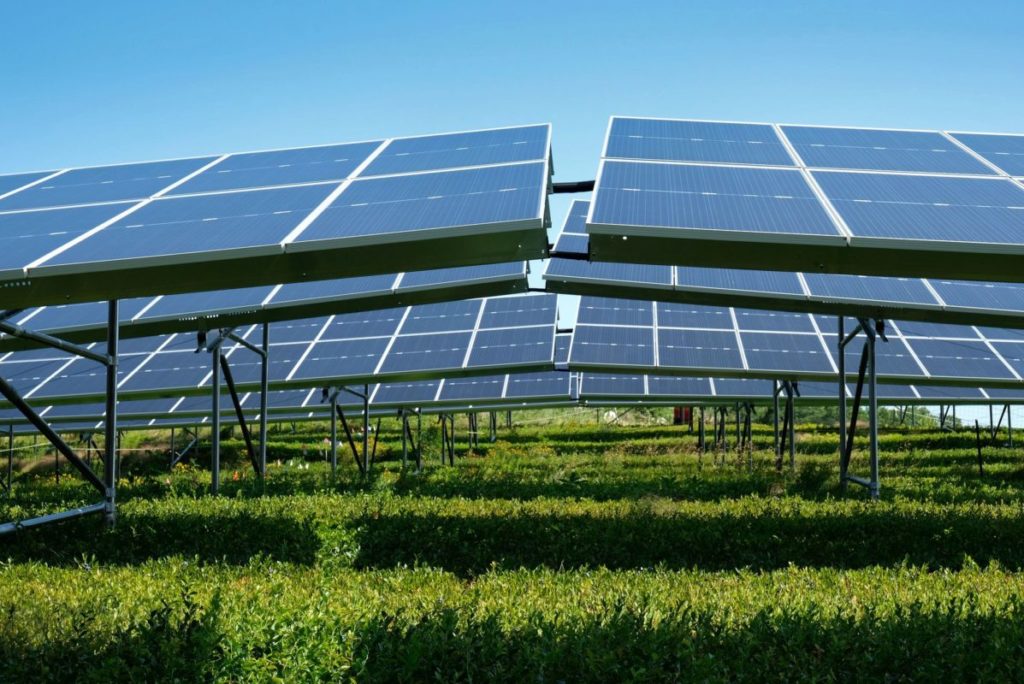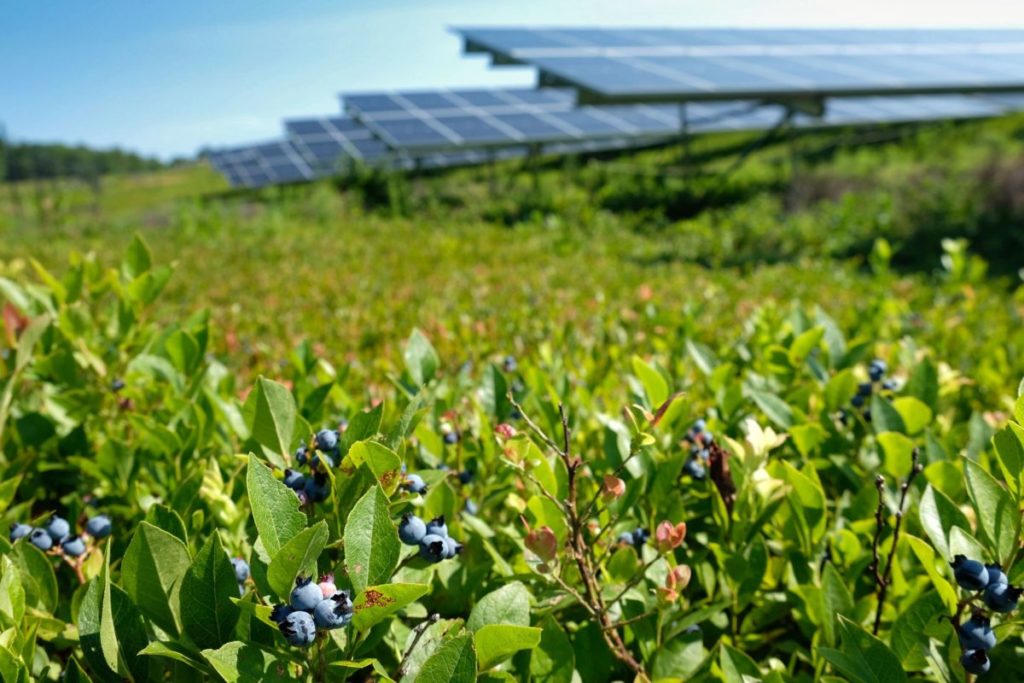
Agrivoltaics are rapidly transitioning from emerging solar technology to an important pillar of the global solar sector. Research from the University of Debrecen found that, since 2014, developers have installed more than 2,200 agrivoltaic systems around the world, and there are few signs of this trend slowing.
Figures from the US Department of Energy’s Solar Energy Technologies Office put the country’s installed agrivoltaic capacity at 2.8GW, and a 2021 report from Fitch Solutions expects global capacity to exceed 10GW by 2030. Meanwhile, Europe alone has the potential for a mammoth 51TW solar agrivoltaic sector, according to research published in the Progress in Photovoltaics journal earlier this year.
Unlock unlimited access for 12 whole months of distinctive global analysis
Photovoltaics International is now included.
- Regular insight and analysis of the industry’s biggest developments
- In-depth interviews with the industry’s leading figures
- Unlimited digital access to the PV Tech Power journal catalogue
- Unlimited digital access to the Photovoltaics International journal catalogue
- Access to more than 1,000 technical papers
- Discounts on Solar Media’s portfolio of events, in-person and virtual
What the sector could benefit from, therefore, is a proof of concept, a solar agrivoltaic project that has generated electricity reliably and affordably, while encouraging meaningful plant growth and cultivation, over an extended period of time, to demonstrate the sector’s ample potential.
In the US state of Maine, the 4.2MW Rockport agrivoltaic project, developed by US solar developer BlueWave, could stand as one of the clearest examples of an effective solar agrivoltaic project in the sector.
The proof of concept
“Its initial conception was as a fairly conventional solar project,” says Jesse Robertson-DuBois, director of sustainable solar development at BlueWave. The company’s initial work at the project followed a fairly conventional path, ultimately working with local independent power producer Navisun to commission the project in October 2021, but Robertson-DuBois notes that the site boasted considerable agrivoltaic potential.
“We were doing typical site acquisition and due diligence on a project and realised, ‘Hey, we’re working on a blueberry field’,” says Robertson-DuBois. “Responding to the site conditions and [doing] what was right for the site [is] really what’s always driven our approach to solar development overall, and particularly agrivoltaics.”
Alongside its solar generation capacity, the project is also a wild blueberry farm, and the plight of the blueberries at the facility over the last two years has helped turn the project into something of a proof of concept for other agrivoltaic developments. Specifically, BlueWave trialled three forms of construction process at the project, to see how different approaches to building and maintaining solar arrays would affect plant growth.
“We divided the site up into three areas, where we looked at a very standard conventional solar construction process; a limited traffic area where we control the access along defined pathways, and had equipment moved through one direction without turns … and then for the third one we actually put down matting, both plywood and polymats, to reduce the ground pressure [and] spread out those loads,” says Robertson-DuBois, who notes that the results have conformed to his original expectations.
“We had the best fruit set and the least damage in the areas that we use the polymatting,” he says. “We’ve had moderate impacts in the area where we had a more managed area and then the open field area we had the most damage, but even in the open field area [we were] really impressed that blueberries survived the process.
“There was some damage [and] there were some reduction in fruit set yields the year after, but even there what we learned is solar construction is not necessarily the death knell for blueberries, and there’s continued production throughout the entire site.”
Technical considerations
The company’s willingness to experiment with its construction methods informed much of its decision-making at the project, and encouraged consideration of a range of options across the project. Robertson-DuBois notes that the project uses bifacial solar panels to best optimise its electricity generation, which is particularly significant at projects where space is limited, such as the Rockport project, which covers just ten acres.
This willingness to adapt is important considering the rate of technological innovation in the solar sector. Bifacial PV panels, for instance, have seen their deployment increase dramatically in recent years, with a report from Wood Mackenzie Power & Renewables noting that bifacial panels accounted for 97MW of capacity in 2016, before increasing to over 2.6GW in 2018. The report’s authors also expect such panels to add 20GW of solar capacity by 2024, and account for 17% of all PV modules in circulation by this year.
While BlueWave generally prefers single-axis trackers for agrivoltaic projects, BlueWave used a fixed-tilt system at the project. The same research published in Progress in Photovoltaics found that, unsurprisingly, the use of single-axis trackers yielded greater electricity generation than fixed-tilt modules, and Robertson-DuBois noted that this type of trackers was of practical benefit for the Rockport project.
“[We] used a very standard TerraSmart fixed-tilt system that we built there,” says Robertson-DuBois. “We had to then go out and custom fabricate equipment for the farmer to be able to do the type of mechanical harvesting they normally do on wild blueberries within the array, working around that TerraSmart racking system, [which] is a great racking system for the type of steep and often rocky sites we have in New England, but it is a difficult system to work around with equipment.”
Delivering specific engineering solutions based on the requirements of the project is nothing new, but BlueWave’s successful balancing of the practical needs of a solar array, with the practical needs of a blueberry farm, is both a blueprint for other developers in the agrivoltaics sector, and a demonstration of the vital role of collaboration within solar construction and maintenance.

Collaboration and community
Working with fellow stakeholders, and even other companies, is nothing innovative in the solar industry, but is particularly important at a project such as an agrivoltaic solar farm, where expertise in both farming and solar installation are necessary.
“We found ways to work with racking manufacturers and PV manufacturers to get good project economics from a PV perspective as well as good, economically viable usability for the farmers,” says Robertson-DuBois, highlighting how this collaborative approach can deliver a similarly diverse range of benefits.
This was particularly important for Robertson-DuBois in particular, as he saw the potential for agrivoltaic projects to offer unique benefits for those who are living and working on the land on which the projects are being built.
“The area that we are really seeing some real positive benefits, that for BlueWave are very meaningful as a B Corporation, is in the community and farmer-landowner relationships,” says Robertson-DuBois. “Solar brings in a 30-year planning horizon for land use, so we’re talking with communities who are experiencing land use change, and typically they’re feeling very defensive about solar development, but they’re also seeing a lot of pressures in the agricultural community.
“Farmers are seeing pressures of losing rented land [and] market pressures,” he continues. “What we’re able to offer with agrivoltaics is a different path to recapitalise farm operations to secure land tenure for farmers who are on rented or leased land; we can now talk to them viably about a 30-year access [plan for] a piece of land that they previously may have been on year-to-year with a handshake.
This is particularly significant considering that, in 2014, over half of US cropland was rented, according to the US Department of Agriculture. As a result, agrivoltaic projects could be particularly attractive for agricultural workers who rent their land, at a time where there is more interest in domestic solar projects than ever before in the wake of the passing of the Inflation Reduction Act.
The role of academia
“For the Rockport project we worked both with the University of Maine but also with [consultancy firm] Solar Agricultural Services … and the principal there, Ian Ward, has a background in cranberry agriculture and in conservation consulting with Natural Resource Conservation Service conservation planning,” says Robertson-DuBois, pointing to research and academic interest in the project stemming from this collaborative approach.
“We were working with the landowner with the farmer [and with Ward] and realising we had this research opportunity and we went out to the University of Maine to bring them in to capture the actual data and provide some scientific validity to the study.”
The University of Maine has worked with BlueWave throughout the installation and management of the project, and has helped in the collection of data regarding best practices for both solar development and agricultural operations. While the company has not yet published many of its conclusions from its work at the Rockport project, its cycles of experimentation and adaption could lead to insights for the long-term benefit of the sector.
Robertson-DuBois also explains that BlueWave has learned from its work at the project, especially regarding its role in the broader solar sector.
“The challenge we’ve found at the scale we’re at in the US is [that] we are still a little too small to drive the engineering process with a manufacturer to come up with a new kit, but too large to just do something completely experimental,” says Robertson-DuBois, who was also optimistic about how these lessons could impact the company’s future operations, both in agrivoltaics in particular, and the solar sector more broadly.
“That has informed our approach to other agrivoltaic projects to start, at an early stage, thinking about the equipment we need to be able to operate in the array,” adds Robertson-DuBois.
“For agrivoltaics to work, you’re not just designing around zero turn mowers, you’re designing around a lot more diversity of equipment, often multiple operations with different types of equipment, [and] really understanding what the height clearances, the width clearances [and] the turning radiuses are; all of those things become really important.”







